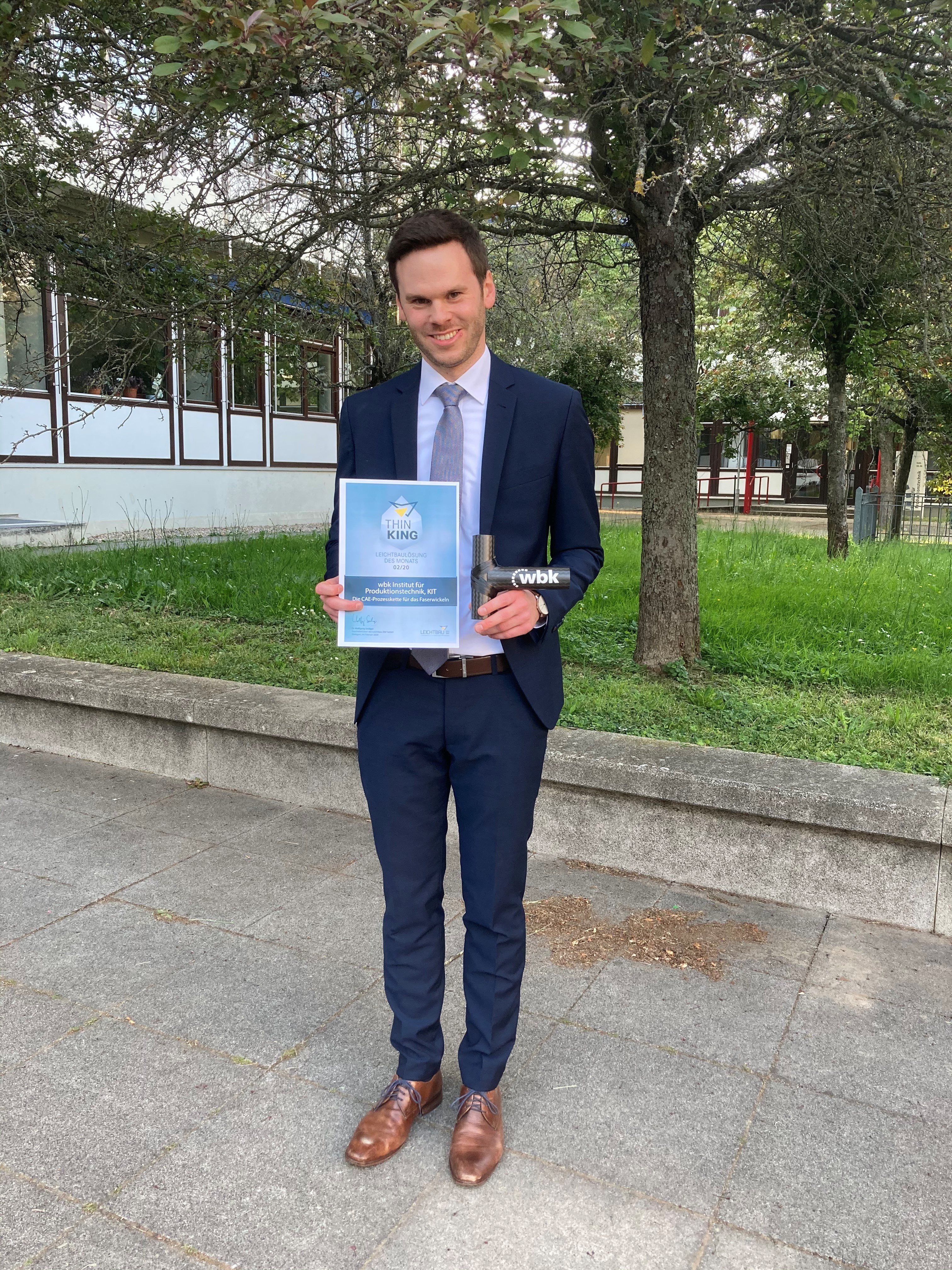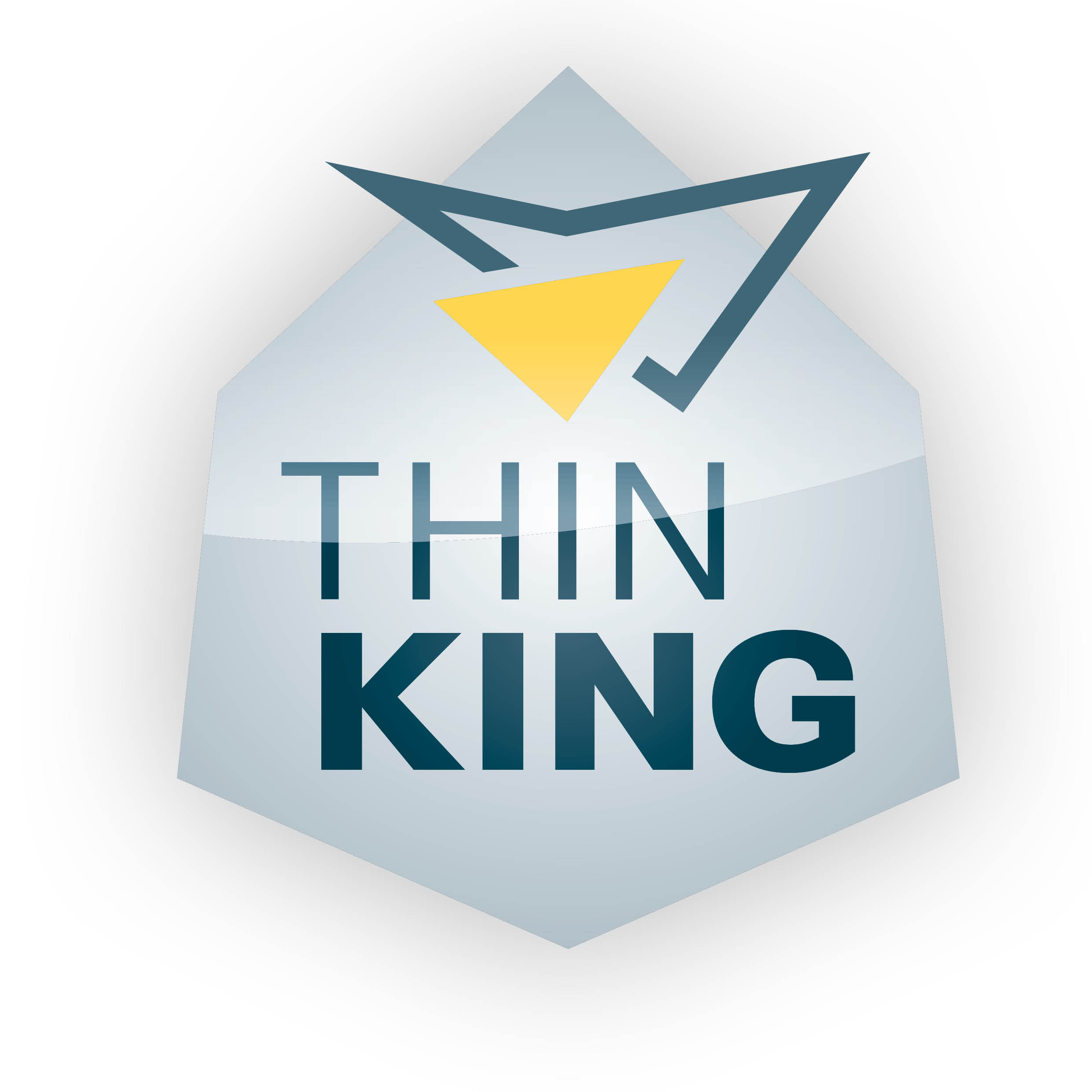
Marius Dackweiler, wbk with certificate
With the joining technology of highly automated fiber winding, Marius Dackweiler from the wbk Institute of Production Science was able to secure the ThinKing Award of the State Agency for Lightweight Construction in Baden-Württemberg for February 2020. The scientific assistant in the lightweight construction group around Professor Jürgen Fleischer, head of the wbk institute, was very pleased about the award. With this label, Leichtbau BW GmbH provides a platform for innovative products or services in lightweight construction from Baden-Württemberg.

Awarded by Leichtbau BW GmbH
What is special here is not only the joining technology itself, but also the continuous mapping of the process in a complete CAE process chain. A graphical user interface allows the winding process to be designed, planned and operated. "The production unit is a complex overall technical system that could be used as a whole by end users in the assembly of profiles. Thanks to its modular design, the system can be flexibly adapted to its task," explains Marius Dackweiler.
Possible application in construction and crane industry as well as in automotive and two-wheeler construction
Structures made of trusses usually have a low dead weight in relation to their load-bearing capacity. The joining method could therefore provide for particularly light, rigid and yet cost-effective truss constructions, especially in the construction and crane industry. For example, crane jibs are usually made of welded metal profiles. However, a considerable weight reduction could be achieved by using fibre-plastic composites and the joining winding technology.
Further applications are conceivable in automotive and two-wheeler construction. There, spatial trusses for chassis are used as so-called grid frames. When joining the demanding fibre composite profiles, no damage occurs, as with riveting or screwing.
The wbk already has a fully functional prototype - a decisive step on the way to series production. Now the wbk is looking for a partner for industrial implementation.
The wbk already has a fully functional prototype – a decisive step on the way to series production. Now the wbk is looking for a partner for industrial implementation. More information (in German laguage) on the ThinKing website as well as in the two videos from Leichtbau BW and from wbk.
Contact:
Prof. Dr.-Ing. Jürgen Fleischer, Juergen Fleischer ∂does-not-exist.kit edu, +49 721 608-44009
Alexander Hauber, alexander hauber ∂does-not-exist.leichtbau-bw de, +49 711128988-47

